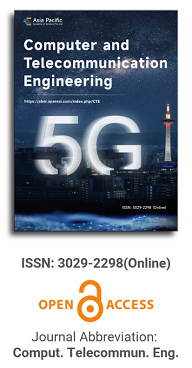
Full Issue
| View or download the full issue |
Issue release: 30 March 2024
Energy efficiency is widely recognized as one of the most significant and economical ways to lower greenhouse gas (GHG) emissions. The aims and goals are that smart meters can evaluate and communicate in-depth real-time electricity usage, enable remote real-time monitoring and management of power consumption, and provide consumers with real-time pricing and analyzed usage information. The house energy management controller decides which loads will be powered based on the real home energy demands and the predefined load priorities. Artificial intelligence (AI) is being used increasingly in control applications due to its great effectiveness and efficiency. As a result, in this work, the author designed, simulated, and optimized an artificial neural network-based model simulation framework that simulates a home with a variety of home appliances and optimizes the total energy consumption of the home realistically through intelligent control of home appliances. The MATLAB application was used to model and examine the performance of four common household appliances: the water heater (WH), washing machine (WM), air conditioner (AC), and refrigerator (RG). The result shows a considerable reduction and savings in energy consumption without a decrease in consumer comfort.
Issue release: 30 March 2024
The methods of estimating the coordinates of sensor nodes based on the measurements made at the “anchor” nodes are widely used in WSNs. In particular, such methods include the RSS method, which is based on measuring the power of signals coming from sensors. The article shows that a similar method can be used for estimating the coordinates of an observation object in the WSN. The efficiency of measuring the coordinates of such an object in the presence of power measurement errors is analyzed. The conditions for increasing this efficiency have been identified. It is shown that the estimation is biased, but the magnitude of the bias is practically independent of the observational conditions and, therefore, can be easily compensated.
Issue release: 30 March 2024
A compact, circularly polarized 8 × 8 antenna array is designed for the 60 GHz band. The array comprises circularly polarized magneto-electric dipoles (CP-ME-Dipole) excited by narrow slots. The slots are fed by a printed gap waveguide (PGWG) cooperative network optimized based on the termination of the effective impedance of the array elements. Thus, it accounts for the space mutual coupling of the antenna elements. A procedure based on the full-wave analysis of a 4 ´ 4 array is used to estimate each element’s 8 × 8 array effective port impedance. The cooperative feeding network is designed based on the known effective impedances. The array is divided into two half subarrays out of phase from each other, and a rectangular waveguide feeds both sides. The commonly measured bandwidth of 18.3% achieves return loss better than 10 dB and an axial ratio below 3 dB (AR) of less than 3 dB. A maximum gain of 26.2 dBic with a high radiation efficiency of 82% radiation efficiency.
Issue release: 30 March 2024
Diabetes mellitus (DM) affects the hormone insulin, which causes improper glucose metabolism and raises the body’s blood sugar levels. With 4.2 million fatalities in 2019, DM is one of the top 10 global causes of mortality. Early detection of DM will aid in its treatment and avert complications. There must be a quick and simple technique to diagnose it. Such diseases can be managed, and human lives can be saved with early diagnosis. Smart prediction techniques like machine learning (ML) have produced encouraging outcomes in predictive classifications. There has been a lot of interest in ML-based decision-support platforms for the prediction of chronic illnesses to provide improved diagnosis and prognosis help to medical professionals and the general population. By building predictive models using diagnostic medical datasets gathered from DM patients, ML algorithms efficiently extract knowledge that helps predict diabetic individuals. The association between DM and a healthy lifestyle is used in the model. In this study, the NHANES (National Health and Nutrition Examination Survey) data set is utilized, along with five ML methods such as Artificial Neural Networks (ANN), CATBoost, XGBoost, XGBoost-histogram, and Light GBM to predict DM. The results of the experiment demonstrate that the XGB-h model outperformed other ML methods regarding area under the receiver operating characteristic curve (AUC-ROC) and accuracy. The most effective XGB-h framework can be used in a mobile app and a website to rapidly forecast DM. Real-time prediction using details delivered by the model at runtime can be developed as a whole bundle as a product. Clinicians can quickly determine who is likely to get diabetes using the proposed strategy, which will facilitate prompt intervention and caring.
Issue release: 30 March 2024
The opioid epidemic is a serious national public health crisis. Although effective medications are available to treat opioid use disorder, there are low rates of uptake and treatment retention. To mitigate these problems, novel engineering devices, such as using virtual reality (VR), warrant examination. Certain opioid use disorder (OUD) populations may especially benefit from virtual reality to assist with treatment initiation and retention, such as incarcerated persons living in pre-release facilities, adolescents and young adults, and patients of methadone treatment facilities. However, prior to implementing VR in research and the community, issues such as side effects (e.g., VR-related nausea) need to be considered. This manuscript provides a brief review, identifies potential OUD-related populations that might most benefit from VR, and discusses considerations needing addressing prior to widescale implementation of VR for OUD.

Prof. Maode Ma
Qatar University, Qatar
The field of computer and telecommunications engineering is rapidly advancing, with the following being some of the latest developments.
more
We are pleased to congratulate the first anniversiry of the journal of Computer and Telecommunication Engineering (CTE).
more
Owing to the tireless dedication of the editor-in-chief, editorial board members, and the in-house editorial team, we are proud to announce the successful online launch of the first issue of Computer and Telecommunication Engineering.
Asia Pacific Academy of Science Pte. Ltd. (APACSCI) specializes in international journal publishing. APACSCI adopts the open access publishing model and provides an important communication bridge for academic groups whose interest fields include engineering, technology, medicine, computer, mathematics, agriculture and forestry, and environment.


 Open Access
Open Access
.jpg)

.jpg)
